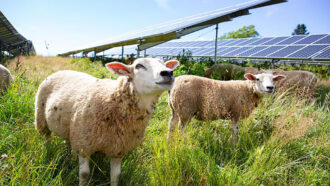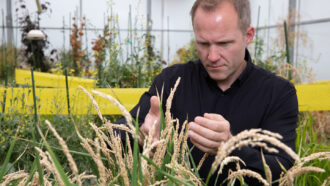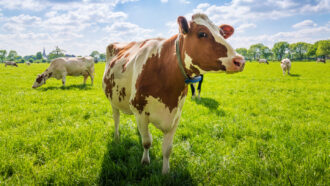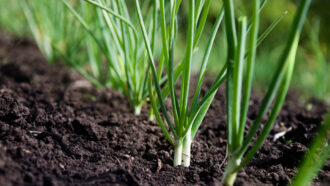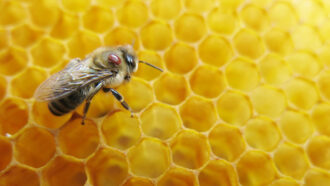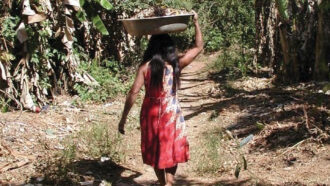Healthy soils are life-giving black gold
Soils provide a bounty of benefits, even limiting climate change
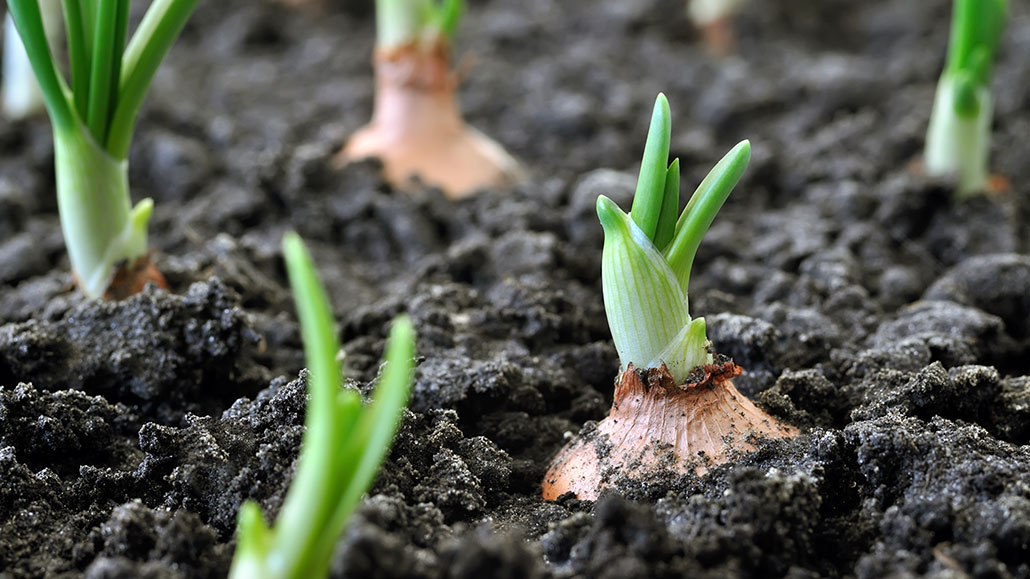
Soils rich in microorganisms and nutrients from decaying plant and animal matter help vegetables like these onions thrive.
YuriyS/iStock/Getty Images
Look out the window or walk over to a patch of soil near your home. Depending on where you live, it could be reddish brown, black, dark gray or even the color of rich, dark chocolate. If it’s moist enough, run your hands through it. It may separate into thick clumps that can hold water and later release it. With a few exceptions — such as desert sites — this is how good soil behaves. Less obvious to the casual glance, that piece of earth is likely throbbing with life.
In fact, the number of microscopic organisms that live in a shovelful of rich garden soil exceeds the number of plants and animals inhabiting the entire above-ground Amazon rainforest. And the Amazon is known for having more plants and animals than any other land-based habitat.
Soil is what supports life on Earth. Most people give it little thought, but it feeds us and the ecosystems around us. It is where countless species make their homes. It collects water, pulls pollutants from the air and helps support the planet’s atmosphere. Soil is one of Mother Nature’s unsung heroes.
And while most soil looks like it’s static, just sitting there unmoving, it actually hosts plenty of activity. Its earthworms may be excavating tunnels. As they wriggle their powerful bodies from deep in the ground to nearer the surface and back down again, they also move old leaves and other bits of rotting debris in both directions: from top to bottom, and bottom to top. Where earthworms are active, they can turn over the entire top 15 centimeters (6 inches) of soil in 10 to 20 years.
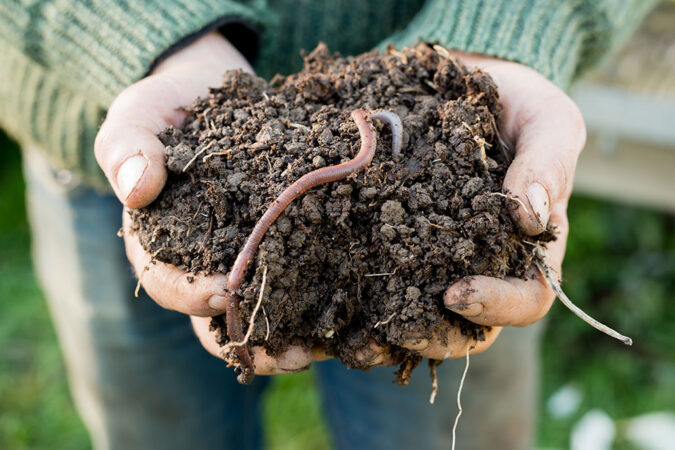
Yes, worms are weightlifters. But they aren’t the only ones making changes. Other creatures belowground are too tiny to see with the unaided eye. These include one-celled creatures called protozoa. They improve soil by eating bacteria and releasing nitrogen, a nutrient that helps plants grow.
And then there are all those bacteria. Most people think of them as unwelcome and dangerous. In soils, they not only serve as prey to beneficial protozoa, but also perform an environmental service. They help recycle dead plant parts and animal tissues into nutrients. They even convert some pollutants in soil and water into more of the nutrients that can sustain the diverse species that make up vibrant ecosystems beneath our feet.
In fact, the addition of microbes from another area can sometimes benefit soils, finds a team led by Tamas Varga. He works at the Pacific Northwest National Laboratory in Richland, Wash. Varga knew that phosphorus is an essential nutrient for plant growth. But it tends to bind to metals or organic matter. And that can make it unavailable to plants.
The researchers collected plants growing near mountain streams in Western Washington. Back in the lab, they ground the roots into powder and mixed it with water, creating an emulsion. Then they ran tests and determined that microbes in and around plant roots could dissolve phosphorus-containing chemicals to make this nutrient more accessible to those plants.
Varga and his team shared their findings October 21, 2020, in Frontiers in Plant Science.
Recipe for healthy soils
Soil is made of four main ingredients. First, there’s humus. Dark and moist, it’s made of bits of rotting insects and other animals, together with leaves, roots, sticks and more. Then there’s clay. It can be made of almost any tiny mineral particles. Clay is defined by its particles’ size: anything less than 4 micrometers (a little less than 2 ten-thousandths of an inch) in diameter. That makes each grain generally smaller than half the width of a cotton fiber and at most 10 times the size of a coronavirus. Silt is soil made from somewhat larger mineral grains or tiny bits of rock that are at least 4 to 6 micrometers in diameter. The fourth soil type — sand — is made of much coarser mineral particles.
Depending on where it’s located, any given patch of soil will have more or less of each of these ingredients. You might think about it like breads that have different starting recipes of eggs, flour and maybe seeds. But the proportion of these soil ingredients plays a big role in how well water will move through them. Water drains easily through the biggest particles (such as sand) and collects or drains most slowly through clay.
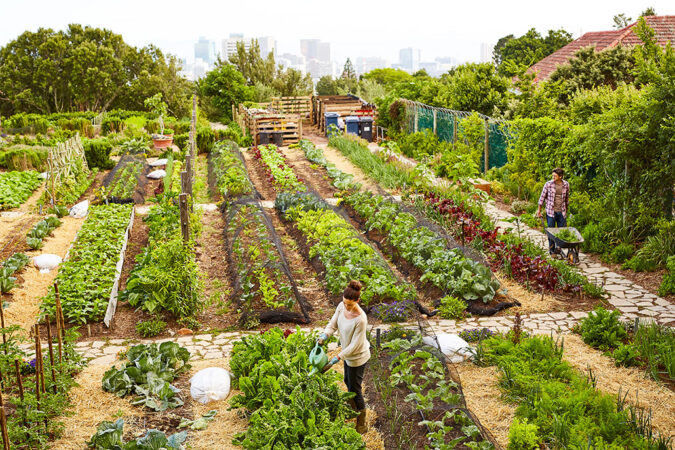
Healthy garden soil tends to look rich and dark. It has a good portion of humus, a certain amount of clay to hold moisture, sand for draining and a bit of silt to balance the other three.
What makes soil unhealthy? Generally, poor soil will fall apart in your hands. Nothing connects its parts. The locks inside are broken. That’s why if your area gets a heavy rain, unhealthy soil can scatter into bits and wash away.
“Unhealthy soil may have a light gray appearance,” notes Ea (pronounced “Ee-ah”) Murphy in Tacoma, Wash. “And when you pick up a handful, there aren’t a ton of bugs squirming from it. Both bugs and plants like healthy soil.” Murphy, a soil scientist, has written a book on the topic: Building Soil (Cool Springs Press, 2015). And bad soil? Often, she explains, it “may be uncovered and exposed to the sun, dry or crusting.”
Guillermo Hernandez Ramirez agrees. He studies agriculture and soil at the University of Alberta in Edmonton, Canada. “Healthy soil behaves like a sponge,” he says, “it can support life.” In contrast, he says, after a heavy rain, “unhealthy soil is a mess. It’s challenging for life to function in soil that falls apart.”
The Dust Bowl lesson
Hernandez Ramirez grew up in rural Central America. There, he says, “everything was about farming and livestock or crops.” Both healthy and ailing soils were all around when he was young. “I saw that plants really depend on soil to deliver the necessary resources,” he recalls. “Soil was a key element of creating food and of everything.”
Now he lives in the prairies of Canada where the Dust Bowl scoured soils off the ground in the 1930s and blew them away. This created “black blizzards” of dust that would settle in mounds, indoors and out.
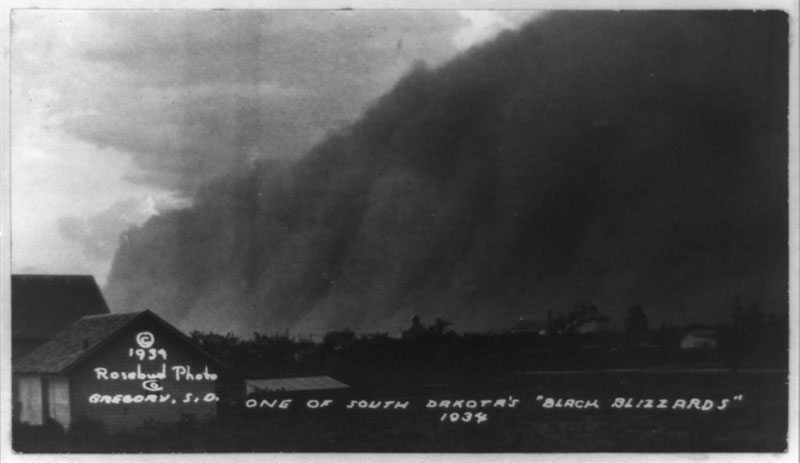
Across North America’s Great Plains, growers had overworked the land. They had relied on farming techniques better suited to moister soils. They had pulled up shrubs and trees. Once the soils were made bare, farmers turned the soil over. Soon the ground dried out and became dusty. When a drought developed, winds blew through cities, eroding the soil. They lofted it skyward from Winnipeg, in Canada, to Minneapolis, Minn., in the upper U.S. Midwest, to Tulsa, Okla., in the South.
For years, people could not grow crops on the loose grit that remained in many parts of the Great Plains. These poorly managed soils no longer sustained farms. At some sites, nothing would grow in the dry dirt that settled onto the ground.
These days, Hernandez Ramirez works to boost soil health. For instance, he studies how to build connections between soil particles using fertilizers. These include the nutrients in animal manure and “biosol” — a type of natural fertilizer that forms during the production of the antibiotic penicillin. Hernandez Ramirez also works to help plants create longer and deeper root systems. Those roots can link soil particles into a structure that nurtures ecosystems.
Hernandez Ramirez remembers droughts his family experienced during his childhood in Central America. By now building soil health, he says “we’re able to create resiliency, an ability to live, that can help us manage drought conditions.” Healthy soils can “handle extremes,” he notes — “high amounts of rainfall, or too little [rain] in the form of drought. Soil is our reservoir: It delivers water and nutrients for plants to grow.”
In the mid to late 1930s, the governments of Canada and the United States worked to establish trees and plants to hold down and improve soils on the Great Plains. Since then, growers have farmed with a greater reliance on science.
“The way we manage the soil enables civilizations to survive, or prosper,” says Hernandez Ramirez. “We need to value it a bit more for its ability to support life.”
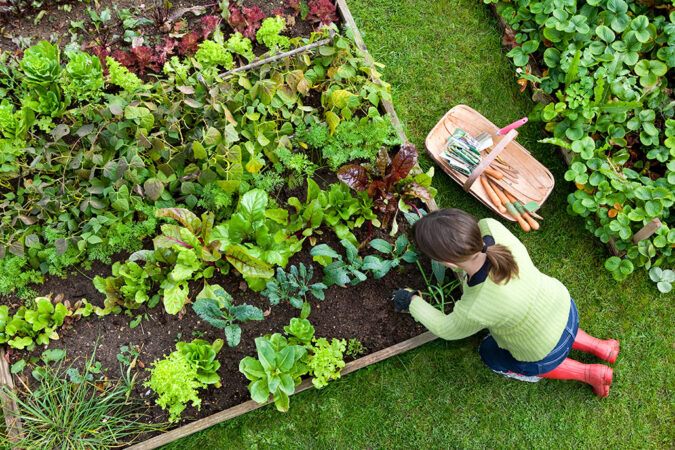
Building soils for a better climate
“The skin of the Earth,” as Murphy calls soil, both grabs and throws away carbon, usually in the form of carbon dioxide or methane.
In fact, soil emits “billions of tons” of carbon each year, notes A. Peyton Smith. She works at Texas A&M University in College Station. There, she studies soil and the cycling of carbon through the environment. Sometimes she uses a machine called a greenhouse-gas analyzer to examine a tray of soil and measure how much carbon it releases.
Most soil takes in pretty much the same amount of carbon as it releases, she finds. The carbon in soil comes from leaves and other matter that fall from trees. Over time, that debris will break down to become building blocks of humus.
We still need to help things along, however. Floods, crop harvests, tree removals and weeding all remove nutrients from soil. Constructing buildings atop soils also disturbs their structure. Such actions can release carbon dioxide (CO2) from the soil, adding it to the greenhouse gases in the air. If those CO2 releases get too high, they will contribute to making the planet warmer each year, essentially giving it a fever. “That’s why we’re so concerned,” says Smith.
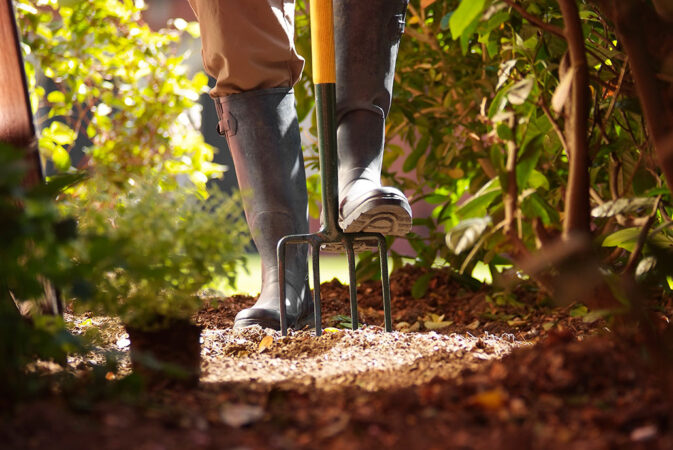
Hernandez Ramirez agrees. “Soil is a reservoir of carbon,” he explains. If we increase its health and use it well, it will absorb more carbon from the air than it releases as CO2. Then it — and the trees growing in it — will actually store carbon, perhaps for centuries or longer.
We can help by limiting soil disturbance. When floods and other processes expose parts of soil to microbes, the tiny organisms that break down organic matter in soil will release extra CO2 into the air.
Farmers regularly till their fields to break up compacted soil, to control weeds and to help mix nutrients into the soil. But this can lead to erosion, as tilling destroys the soil’s natural structure. Tilling also can harm organisms that call the soil home. We can keep soil a bit safer from hungry microbes if we reduce tilling or plowing the soil. With tilling, “we break up what’s in the soil into bite-size pieces,” explains Smith. This exposes those bits to microbes that can feast on all that exposed carbon.
That’s why many farmers now try to limit tillage. They keep at least one-third of the crop residues (the stems and roots of crop plants) in the soil after harvest until it’s time to plant again. Known as “conservation” tillage, it helps conserve the soil’s structure and below-ground inhabitants.
In December 2019, Jillian Deines was part of a team at Stanford University in California that reviewed satellite images taken between 2005 to 2017. They showed corn- and soybean-growing regions spanning nine midwestern states. Farmers that used conservation tillage tended to have bigger harvests. Harvests were, on average, about 3.3 percent higher for corn and three-fourths of a percent higher for soybeans. And the effects were biggest for farms that had used this low-till practice the longest.
But better crop yield was not the only benefit. Reducing tillage also led to healthier soils, the study found. Farmers even spent less money growing their crops on these soils.
Deines and her team described their findings December 6, 2019, in Environmental Research Letters.
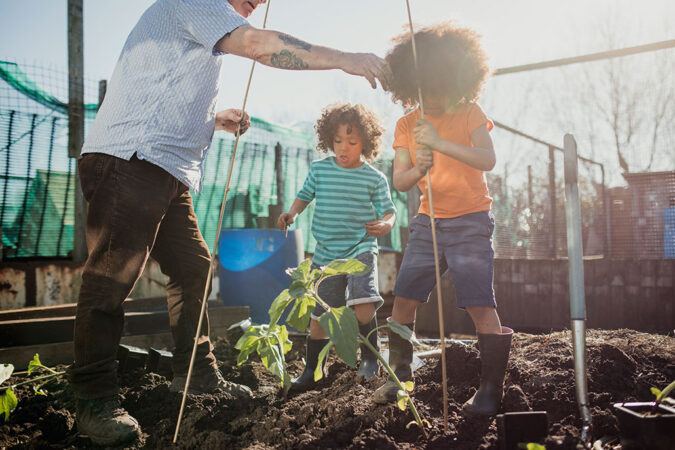
Storing carbon
Soil and plant materials can hold on to carbon and keep it safe from microbes in interesting ways. Think about a worm in the soil that eats bits of leaf. As that leaf cycles through its digestive tract, soil microbes can’t reach it, explains Smith.
Here’s another example from Smith: A very woody tree dies and falls to the ground. Knots and layers under the tree’s bark contain a plant compound called lignin. It doesn’t degrade immediately. So for a year or two, the carbon remains in the tree, where microbes can’t get at it and release it into the air as CO2.
Chemistry also plays a role. Clay and certain other soil materials can attract carbon with an electric charge. “Sometimes [this] carbon can’t be broken down by microbes,” notes Smith, explaining why “clay is very important to keeping carbon in soil.”
There’s more for us to learn underground, too. For instance, how plants distribute their roots underground matters. Whether they are crowded or growing alone may affect how much carbon they take up and hold.
Plants adjust where they send their roots. In a way, those roots are smart. They can sense what nutrients are in the soil. They also can tell how close the roots of related plants are and can distinguish them from the roots of unrelated species (competitors).
Plants use these data to decide where to send their roots. Plant ecologist Ciro Cabal was part of a group of scientists at Princeton University, in New Jersey, who teamed up with others from the National Museum of Natural Sciences in Madrid, Spain. They used root data to create a computer model. It predicts how plant roots will respond to the presence or absence of other roots in the soil around them.
Then they tested their model using pepper plants growing in a greenhouse. And those tests showed that crowded plants keep their roots nearby rather than spreading them out widely. Plants remove CO2 from the atmosphere and add it to their stems, leaves and roots. In fact, a third of that carbon will be stored in roots.
From such research on roots, we may later learn how better to predict a soil’s carbon uptake. Farmers also may learn how to slow soil’s release of CO2 to the air. As we learn more about how plants distribute their roots and the carbon they retain, we may also learn ways to grow strong plants while retaining more carbon in the surrounding soil.
Cabal and his colleagues shared their findings December 4, 2020, in Science.
Most people treat soil like dirt. Farmers view it more as black gold. They see it as the key to growing food to feed increasing numbers of people on ever smaller plots of land, notes Hernandez Ramirez. “All the food we see in grocery stores is connected to one farm or other. To deliver and support life, we need to look to the soil. It is our capital [or investment], and we need to preserve that.”
